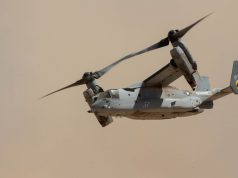
The Australian Army has taken delivery of the first two of the new heavy-lift CH-47F Chinook helicopters as they arrived in Townsville on July 7.
Earlier this year, Australia decided to invest A$595 million (approx. $443M) to bring its Chinook fleet from 10 to 14 under the acquisition program.
The first two of the new helicopters were delivered to Townsville this week aboard a US Air Force C-5 Galaxy transport aircraft. The third and fourth helicopters are expected to arrive in Australia mid next year.
At around 30 meters long, the CH-47 Chinook is a tandem rotor helicopter and is designed to provide tactical transport capabilities for vehicles, heavy equipment and dozens of troops.
Minister for Defence Peter Dutton welcomed the arrival of the helicopters to Army’s 5th Aviation Regiment.
“The additional helicopters will strengthen Army’s airlift capability into the future and increase the ADF’s ability to support operations globally,” Dutton said.
“The Chinook is defense’s largest helicopter, with a long and proven track record of supporting ADF operations in Australia, our near region and further afield.”
The arrival came about three months after the sale was approved. The sale approval from April this year also included Australia’s purchase of the latest version of the M1 Abrams tank for an estimated $1.685 billion.
Dutton said the delivery of the helicopters just days before the beginning of exercise Talisman Sabre – the largest bilateral combined training activity between the ADF and US military – highlighted the countries’ excellent strategic working relationship.
“By working closely with the United States, through streamlined processes to rapidly deliver defense capability, the government is demonstrating its commitment to defense’s strategic objectives and, in this case, bolstering defense’s aviation capability,” he said.


























